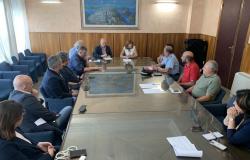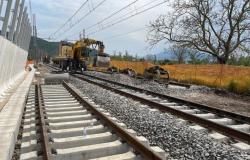The concentration towards our major sites penalizes regional areas which have always been destinations only for local and Italian tourism, which risk further declines, preferred by foreign locations, such as Albania, Montenegro and Greece, at more competitive prices. Medium and long-term governance is needed, innovating processes and models for promoting the entire regional territory and making choices on limited numbers, dedicated transport, safety and social balance.
The Region decides on the management of the Campania Turismo agency as well as that of the cultural heritage Scabec and determines a skills plan capable of reversing the perceived condition of stasis. The choice to accompany the spontaneous aggregative will of the territories to create DMOs is good, but clear and simple rules must be defined quickly to avoid blocking these public-private aggregations, avoiding individualism, reducing risks of
lack of homogeneity and little synergy.
In Naples, the new maritime station and the renovation of Beverello are good news for maritime transport, but chaos and congestion remain in the Gulf, to the detriment of environmental protection. Concerned about the management of the concession of lidos and free beaches, good for the good bathing conditions of most of the coasts of Caserta, Naples and Salerno. The trend at Capodichino airport is excellent and the start of the airport in Salerno is good, with the first landings of low coast flights, but there are concerns about the management of services in Salerno and the airport area, for a summer that promises to be full of inconveniences also due to the simultaneous suspensions of the historic Naples Pompeii FS line, due to works starting from 11 July, as well as for the EAV Baiano lines and the difficulties in managing flows on the Naples Sorrento line.
Also the road works planned by Anas and Autostrade and the traditional blocks and traffic jams towards the Amalfi and Sorrento state roads affected by non-resolving measures of alternating number plates. The lack of implementation of the established restricted traffic zone on the Amalfi Coast is a burden, as it is also affected by problems of heavy hiking with difficulties on sea roads and bus routes. Caserta finally initiates the first important organizational signals for tourism in the city and not just hiking. There is no discernible public plan for the valorisation of internal areas, from Irpinia to Sannio, many announcements but few incisive interventions to encourage target flows of slow and naturalistic tourism. A lot of spontaneity and private initiative compared to choices that would require clear resources and planning, which could find new opportunities for flows, even in the new opening of Salerno airport, if co-marketing agreements can be created with international companies.
For Cilento, a predictable trend like last year, the lack of investments to encourage foreign flows weighs heavily while serious doubts remain regarding the resumption of sea routes, after another unsuccessful tender. For non-hotel tourist accommodation, from Abbac, they report that the new additional measures with the introduction of the national identification code, the European Dac7 directive with the obligations on online portals to report fiscal and cadastral data such as the withholding tax and the application of the 2023 regional law, strongly supported by the association, is leading to a recovery of the undeclared economy and regularization, however it is necessary to strengthen controls and further support quality investments, working on a rebalancing in the historic centers, to reduce the impact of tourism
. Increasingly intense controls which it is hoped may concern illegal activity and speculation also for irregular private transport, accompaniment and unauthorized tourist guides. Request for joint force reinforcement for security checks in ports, airports and stations. Municipalities increasingly greedy for tourist tax, landing contributions and local taxes, with a non-homogeneous guarantee of reception services and supply chain support.







